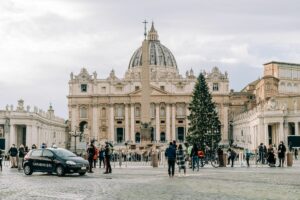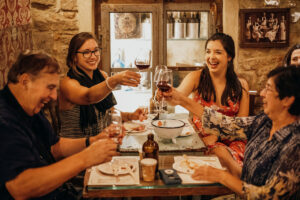Last Updated on October 17, 2025 by Cassandra Gambill | Published: April 2, 2019
After thousands of years of habitation and hardship, one thing is certain: the Jews of Rome have a cuisine unlike any other in the world. Rome is home to Europe’s oldest Jewish community.
The first Jews arrived in Ancient Rome as slaves from the conquest of Judea. Sephardic Jews arrived from Spain after the expulsion of Jews from Iberia in 1492, along with some Ashkenazi Jews from Central Eastern Europe.
Roman Jews, due to the longevity of the community, are considered a distinct group. For example, I’m Italian (from my father) and Ashkenazi Jewish (from my mother), and I live in Rome. But I’d never consider myself a Roman Jew, nor the matzo balls and pastrami of my childhood to be Roman Jewish food.
Like all Jews, the story of Gli Ebrei Romani is one of tradition maintained throughout persecution. However, the particulars of both their history and the terroir of their home created Roman Jewish food.
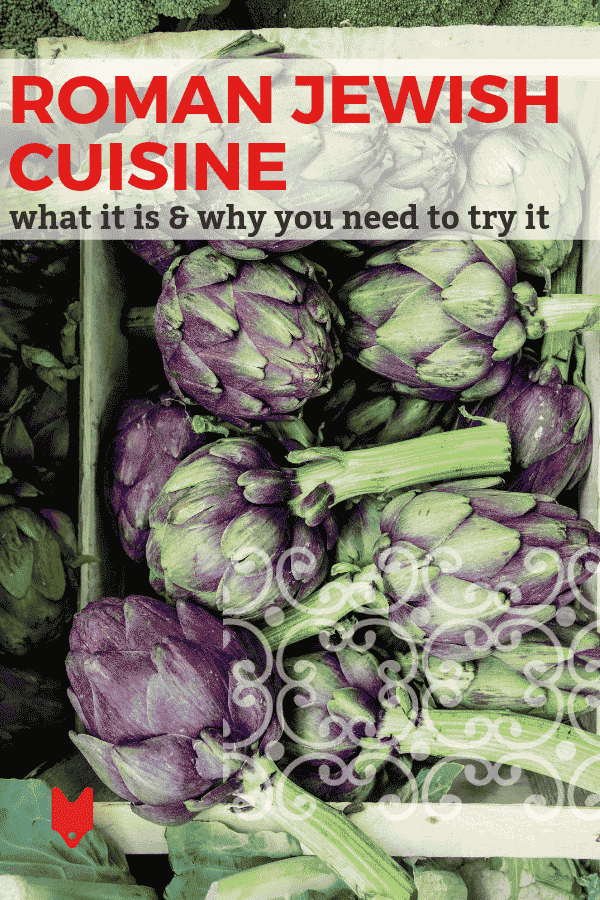
Roman food, but Kosher?
Because of Rome’s overwhelming Catholicism, plus its centuries-long persecution of Jews, one might assume that Roman Jewish food is completely different than “normal” Roman food, or maybe just a kosherized version.
The truth is quite the opposite. Roman Jews eat many typical dishes of cucina romana. Cacio e pepe, chicken stewed with peppers, roast abbacchio (suckling lamb) are all dishes favored by Catholics and Jews alike.
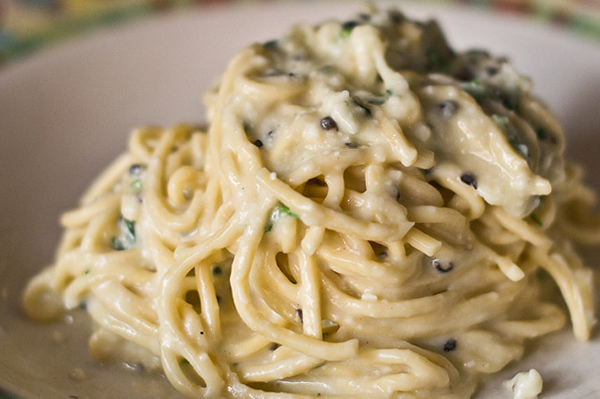
We can go one further, though. Many dishes thought of as typically “Roman” actually come from the Roman Jewish community. The most famous example is the carciofo alla giudia, literally “Jewish-style artichoke.” A fried globe artichoke, it was probably invented when Sephardic Jews from Spain (already expert friers) started cooking Rome’s indigenous vegetable in olive oil.
Another dish like this is concia. This is fried zucchini that is then to soak in olive oil, vinegar and herbs for a few days, with a weight on top to keep the slices submerged. Conciatura means “leather tanning,” as the weight on top of the zucchini supposedly mimics weighing hides down in their tanning solution. Both of these dishes are relatively easy to make. Check out this video of Nonna Betta, one of Rome’s best Jewish restaurants, to see how to make them—or you could just go there yourself on your next visit.
Kosher law prohibits the consumption of shellfish, pork and meat mixed with milk. Therefore, Roman Jews avoid certain things common to Roman cuisine. Instead of cured pork, they make a wonderful product called carne secca, “dried beef.” The beef is salted and hung to dry like a prosciutto. My local butcher, of Jewish origin, makes his own and recommended that I cut it up and fry it with tomatoes and zucchini to dress some fresh pasta. No grated cheese though—that’d make the dish treif.
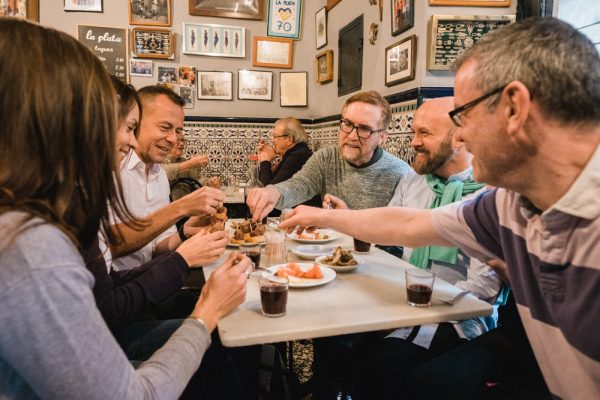
A People of the Ghetto
We can’t talk about Roman Jews without talking about the Ghetto. A section of the city center located on the banks of the Tiber, the Jews of Rome were shut in here from 1555 to 1870. They were deprived of most political and economic rights, and for hundreds of years remained poor, cramped in narrow apartments, and allowed out only during the day. Today the Ghetto remains the center of Roman Jewish life, a symbol of both present prosperity and past persecution.
We also can’t talk about Roman Jewish food without taking the Ghetto into account. The combination of cramped conditions and poverty made the invention of certain dishes a necessity.
Aliciotti con indivia is classic dish of anchovies baked with endive and herbs. Roman Jews love it like New Englanders love fried clams. But behind it is a history of deprivation. During the ghetto period, there was a big fish market right outside the wall. At the end of the day, the leftover fish (often oily, cheap ones like anchovies) would be given to the Jews, who bulked it up with a strong vegetable like endive.
Cassola is a delicious Roman-Jewish cheesecake made of ricotta, eggs, cinnamon and honey. But it has nothing to do with the cheesecake you might see in Manhattan. In the Ghetto, most of the apartments had only a fireplace to cook in,with no oven. Therefore, any dessert had to be something that could cook in a pan, like a flourless cheesecake, instead of a cake that required consistent ambient temperature.

Heads in the Present, Hearts in the Past
“This keeps the food warm during Shabbat,” says my friend Claudio, a born-and-bred Roman Jew. “I take my religion and adapt it to modern technology.”
It was Friday afternoon and Claudio was busy preparing for Saturday before the sun went down and he couldn’t use electricity. Sort of. The veal with peas and salt-cod in tomato sauce that he’d prepared for Shabbat lunch would remain on a metal hot plate hooked up to a timer, set to start heating the food up an hour after morning services ended.
Roman Jewish food is still widely eaten. Some dishes, like the artichoke, have made their way into the city-wide canon. Many others are cherished not only for their cultural and sentimental value, but also for their original function: cheap food that’s kosher and sits well. It’s rare to find a Roman Jewish house without stracotto (beef braised in tomato sauce) for Shabbat, because a tough cut of muscle can cook overnight in the oven or crockpot and be ready for lunch.
The New Stuff
There are no “modernist” developments in Roman Jewish cuisine, to be sure—don’t expect a foam of fried artichoke or kosher wagyu. However, there have been some (relatively) recent changes.
At MeAT (Via Portuense 465/a), a Roman-Jewish restaurant in the Portuense neighborhood of southern Rome, the menu is kosher-style rather than strictly kosher. You won’t find shellfish or pork, and all the meat is kosher, but classics like cacio e pepe and stracotto are prepared in the same kitchen. This points to increased interest in Roman-Jewish food from non-Jewish Romans and tourists, who want to try the typical cuisine but don’t necessarily care about it being strictly kosher.
As for kosher options, the trend in recent years has been towards the cheap and fast. Which isn’t necessarily a bad thing! There are kosher hamburger joints, sandwich shops, even sushi. I’d personally recommend C’e Pasta e… Pasta!, which is a dairy kosher caffetteria frequented by many Roman Jews on their lunch break.
The most significant change has to be the influx of Jews from the Middle East, though. Since the creation of Israel, foods like hummus, pita and other Levantine foods have become mainstays. Even more important is the presence of Libyan Jews. After the 1967 Six-Day War, virtually all Jews in Libya faced violence and were airlifted to Rome. They settled near Piazza Bologna in the north of the city, and brought with them a unique cuisine, rich in spice, nuts and grains like couscous.
